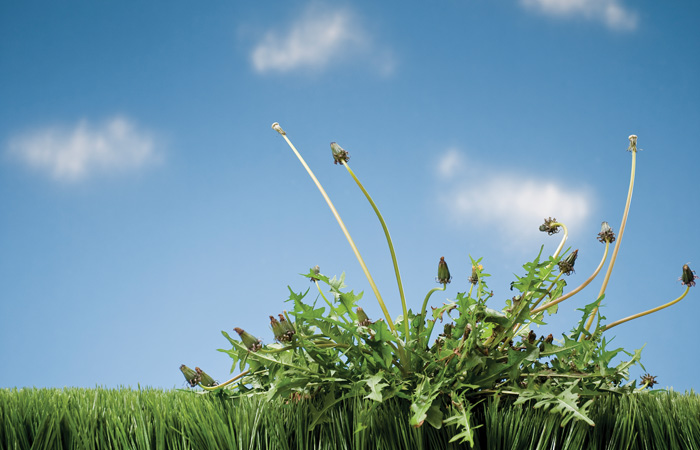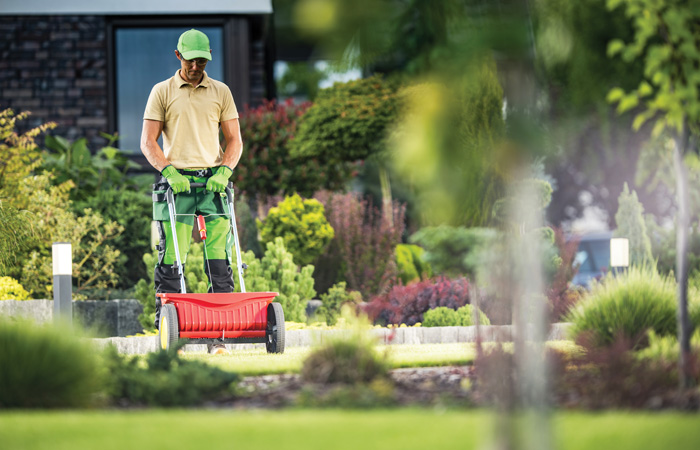Ask the Superintendent – Spring Weed Control

With the new year well underway and yet another arctic winter blast in the books for 2025 (yes, this was also true in 2024), we have plenty of distractions in our day-to-day lives, so it can be easy to forget that it is spring//summer pre-emergent weed control season. If you are a loyal AVIDGOLFER reader and supporter of this column, you know that the February Ask the Super always features spring/summer weed control topics.
That said, every turf-focused club member and homeowner this time of year asks the same question: “How do I control the weeds in my lawn?” Once you miss the ounce of prevention that is the pre-emergent herbicide application window, then the much more expensive pound of cure options are all that are available. So walk with me through the critical steps as we answer this most ardent and timely of questions to set you on the path to a better home lawn. *A critical note to the reader, be sure to read the “What is a weed” section carefully to help you control weeds you see now versus future weeds that have yet to germinate.
First Things First
It is important to know what type of turf grass you have in your lawn before you start developing a weed control program. Common turf grass types in North Texas include Bermuda grass, Zoysia grass, Saint Augustine, centipede grass and Fescue, just to name a few. Each type of grass has different light, soil and fertility requirements as well as growth and environmental factors, so knowing that you have picked the best-suited grass for your lawn’s environment is important. Healthy turf is the first step in controlling invasive weeds. A healthy base turf can suppress weeds before they can establish themselves in the sward (turf stand). Call in a turf expert for ID and consultation, if necessary, but knowing that you have the right grass in place is critical. Once confident that you have the right grass in place, we will move on to defining what a weed is and how to control the weeds that will eventually challenge your desire for a beautiful weed-free lawn.
What is a Weed?
What exactly is a weed anyway? For our purposes today, we will define a weed as a plant growing where it is not wanted and in competition with desired/cultivated plants (lawn). So, essentially, any plant that is growing where it is not wanted is a weed. So Bermuda grass growing in a Saint Augustine Lawn is considered a weed. In terms of lawn or turf weeds, they come in two basic groups, winter, or cool season weeds (henbit, chickweed and poa annua or common meadow grass to our friends from the UK) and summer, or warm season weeds (goose grass, crabgrass and nutsedge). These weeds begin to germinate at various times of the year. The cool season weeds start to germinate in late summer, early September through November, and the warm season weeds start to germinate from mid-February through May.

There are two basic approaches to weed control, physical and chemical. Physical weed control is simple; you will literally remove the weed physically. This is often impractical, depending on the number and establishment of the weed population. Besides, does anyone really enjoy pulling weeds by hand? I know that I don’t, so let’s talk about chemical weed control.
Chemical weed control is achieved using herbicides (an agent, usually a chemical used to kill plants). Herbicides also come in two primary groups, pre-emergent and post-emergent herbicides. Pre-emergent herbicides are applied BEFORE (thus, the urgency in the spring/summer edition weed control article) the weed plant germinates, killing the plant just after seed germination before a root can establish in the soil. A post-emergent herbicide is applied to existing weeds and often requires direct contact to be effective. There are some pre-emergent herbicides that have post-emergent characteristics but, by and large, you will make the choice of herbicide based on the time germination of the weed. Post-emergent herbicides can also be selective (kill certain plants but will not harm others) and non-selective (will kill or damage most plants that contact the product).
It is also important to note that the weeds you see now are cool season weeds. Did you make your fall/winter pre-emergent application(s)? If not, these weeds can be controlled now with post-emergent chemistry or simply wait until warmer weather then lower your mowing height, reduce the watering and the heat will take care of this year’s cool season weeds. Remember the weed seeds from this year’s mature plants will still be there until the fall, and schedule pre-emergent applications accordingly.
Timing is Everything!
It is critical that a pre-emergent herbicide be applied properly and at the right time of year to be truly effective. So now is the time to apply pre-emergent to control summer or warm season weeds, starting in February. We will not go into all the factors that affect weed seed germination; just know that pre-emergent herbicides are most effective if they are applied before the weed seed germinates. In fact, pre-emergent herbicides prevent the germination and establishment of weed seeds by inhibiting a key enzyme critical to plant health and should be applied in the spring and fall to provide year-round weed protection. It is important that the herbicide makes good soil contact to be effective, so watering in the product is recommended.
Most homeowners will likely choose a granular pre-emergent which can be purchased from your local nursery or garden center. Here are some effective options. Prodiamine (Barricade equivalent) is the longest-lasting and most economical due to the lowest application rates. Isoxaben (Gallery equivalent) prevents a very large list of Broadleaf weeds. These products often combine herbicide with fertilizer.

Once you have purchased your product, simply follow the instructions on the product label that is attached to the bag/container. If you have questions or want the latest tips on turf grass in Texas, the Texas A&M Agrilife Extension program can help, either online or by phone.
To improve your results, you may consider making a spilt application of the herbicide. This involves making two applications at 50 percent of the recommended total product rate. This allows one application early in the season, and a second several weeks later to offer a larger window of control without over-applying the active ingredient of the herbicide.
If you are making a granular pre-emergent herbicide application, here is a quick reminder of how to calibrate your rotary spreader. Split applications will also limit the impact of severe weather on the effectiveness of the application.
How to Calibrate a Rotary Spreader
Determine the amount of fertilizer/product needed for 100 sq. ft. For example, the fertilizer bag weighs 50 lbs. and covers 10,000 square feet, per the label recommendation.
Place this amount in the spreader.
Mark off the area. For a rotary spreader, use a 10-foot by 10-foot area (100 sq. ft.).
Apply using the suggested label setting to the test site.
Adjust the setting up or down based on the actual amount of fertilizer applied, if you covered the area completely with nothing left in the spreader you are perfect! If you have product left in the hopper, increase the spreader setting, if you run out of product before the area is covered, then decrease the setting. Repeat this process until you find the correct setting. Take notes for future reference.
Complete the application for the rest of the lawn.
Wrapping Things Up
Successful weed control is an ongoing process of controls and actions that strengthen the base turf grass and eliminate undesirable plants. It is February, so I will remind you again if you see mature weeds in your lawn, they are winter weeds (see paragraphs three and one) and will not be killed by a pre-emergent herbicide applied now. Just remember that the spring pre-emergent application prevents summer weeds, and a fall pre-emergent application prevents winter weeds. You will need to apply both for the best results.
If you are counting, I mentioned three different times that weeds that are present now are winter weeds and will not be impacted by pre-emergent herbicides at this stage of growth. That is because it is so common for homeowners to misapply good products and get poor results. That said, there are no 100 percent effective pre-emergent weed control products available, so using some physical removal and post-emergent herbicide applications is also required to be most effective.
A great lawn is in your future. Remember to be diligent, follow all product and safety label directions, and your perfect lawn will soon be a reality.



